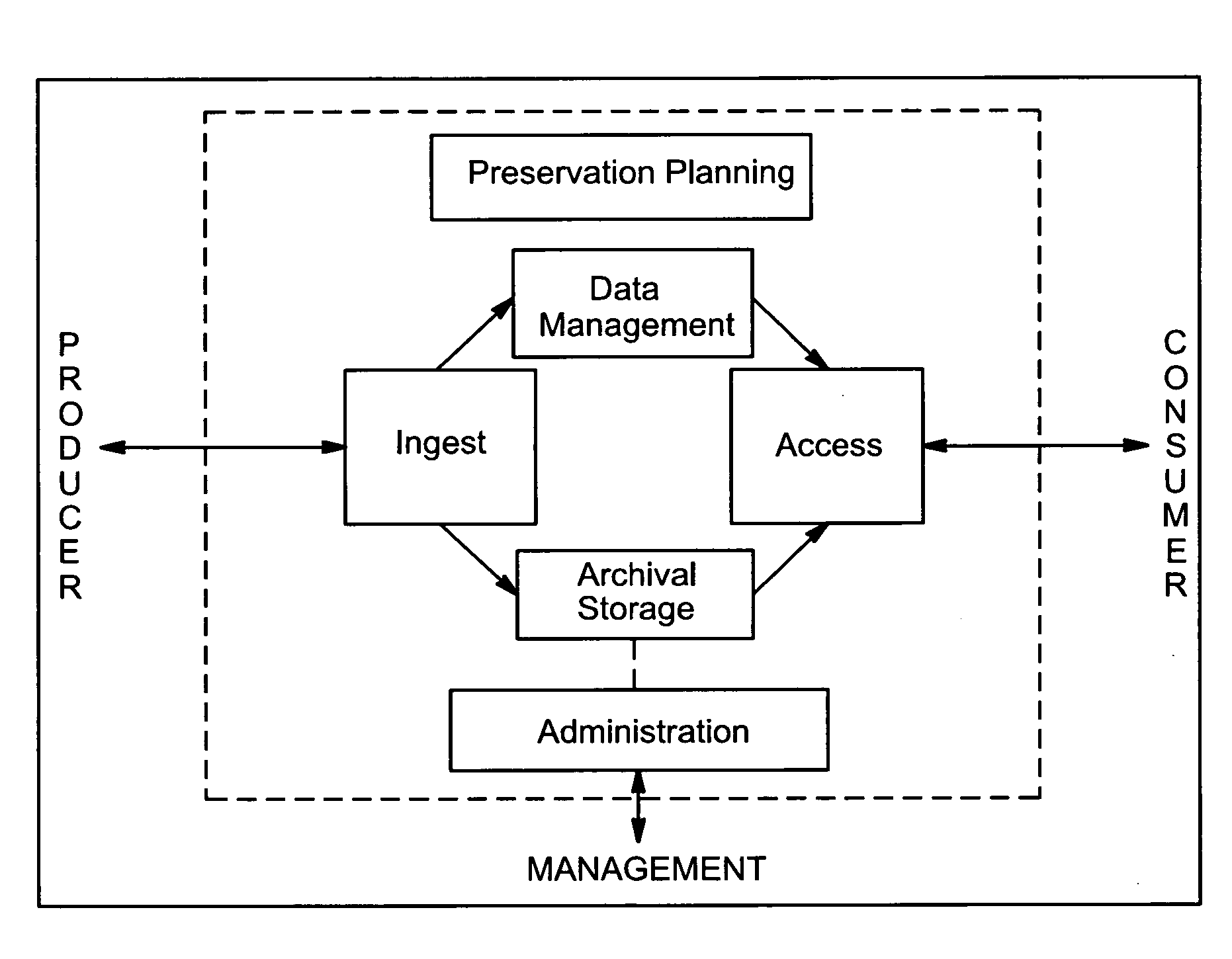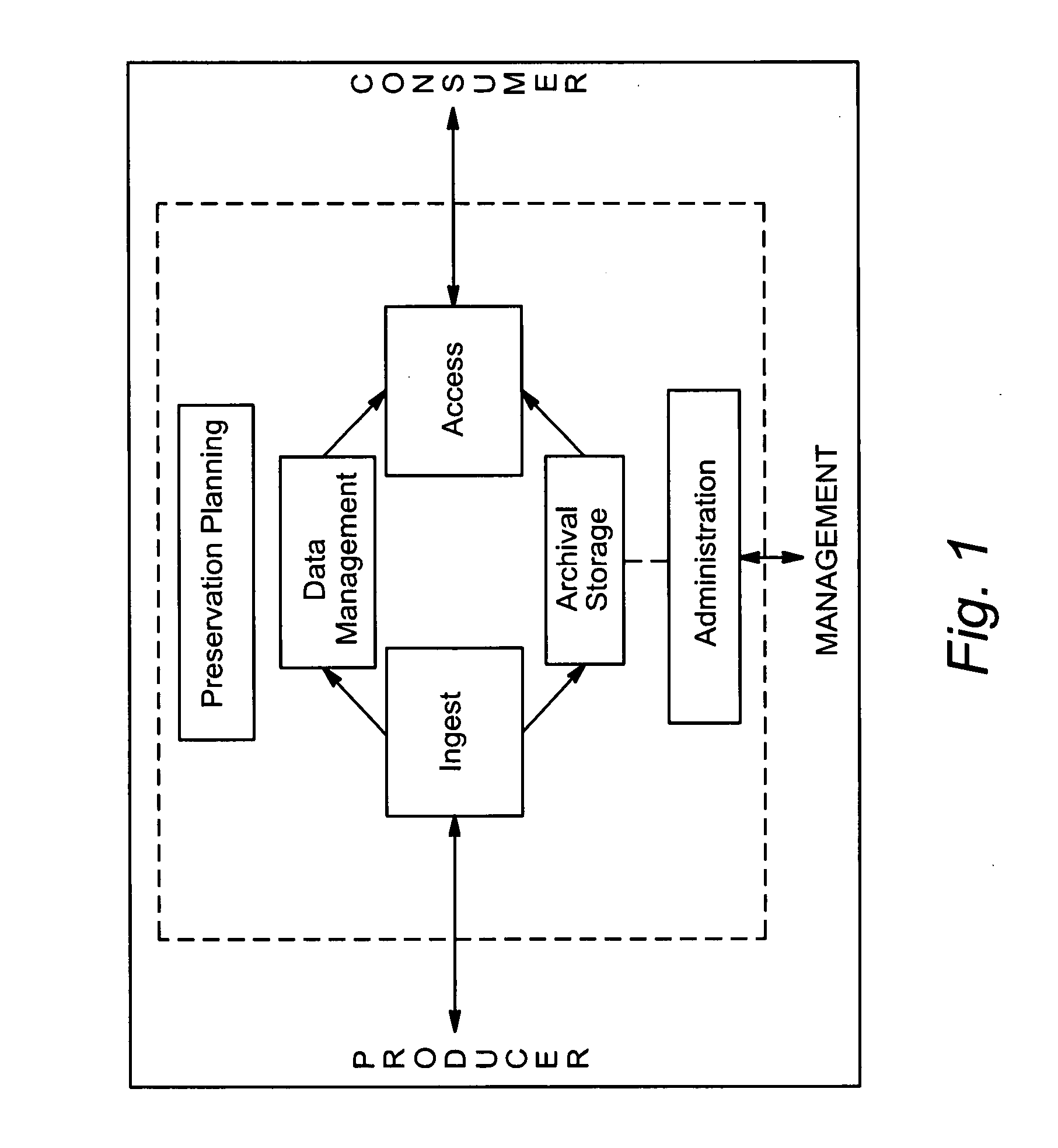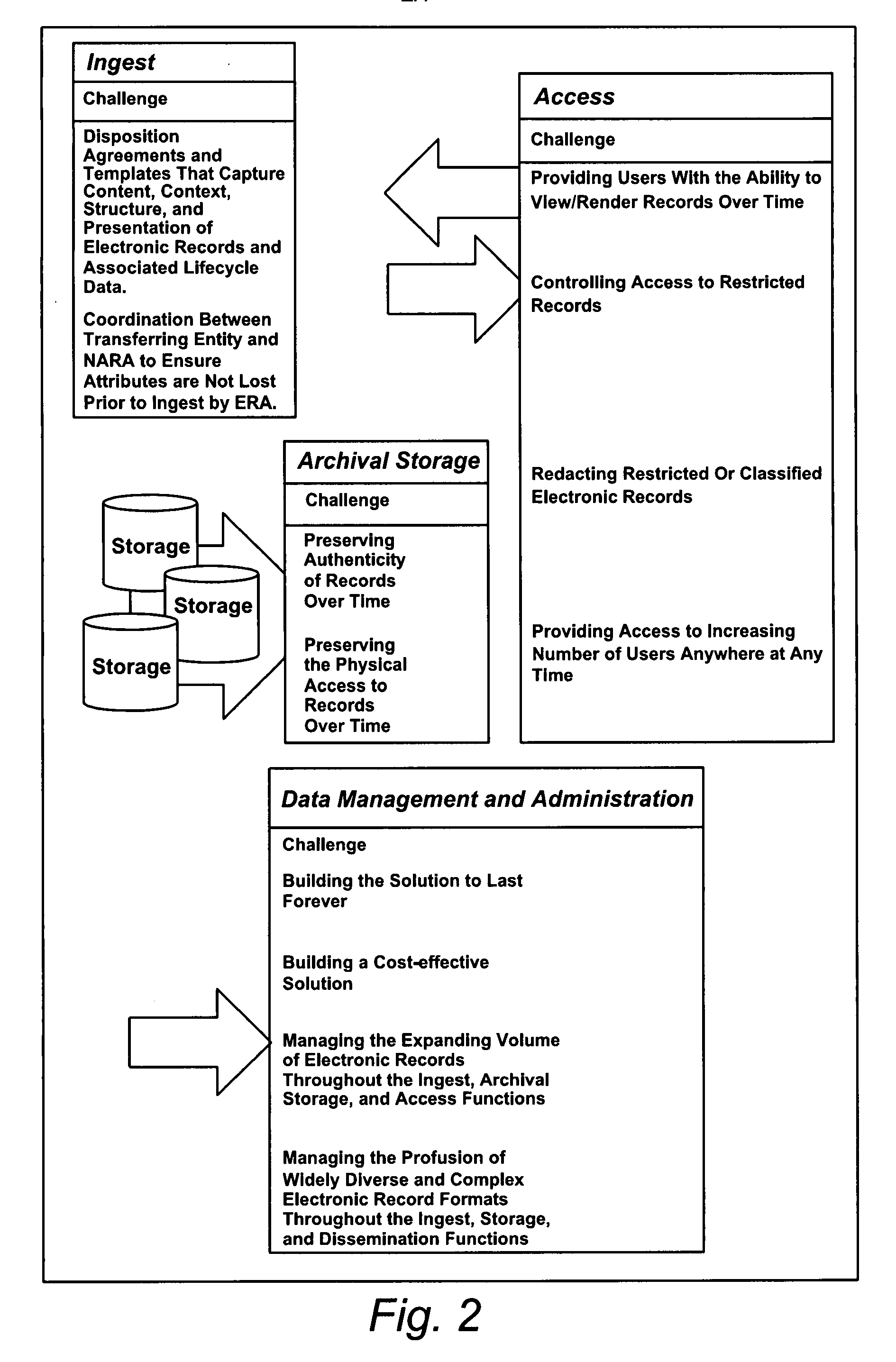System and method for managing records through establishing semantic coherence of related digital components including the identification of the digital components using templates
a technology of semantic coherence and related digital components, applied in the field of systems and methods for managing records through establishing semantic coherence of related digital components including the identification of digital components using templates, to achieve the effect of reducing the impact of necessary changes
- Summary
- Abstract
- Description
- Claims
- Application Information
AI Technical Summary
Benefits of technology
Problems solved by technology
Method used
Image
Examples
example 1
[0125]Consider a record of a particular veteran's military service. Information about that individual's service dates, ranks, and defined benefits is strongly logically connected. Is the same information for a different individual the same record? No, because the logical connection for information about one particular individual is very strong whereas the logical connection for information across individuals is weaker.
example 2
[0126]Consider again a record of a veteran's military service. Now consider information about a battle plan for a particular military engagement in which the individual participated. Is the battle plan part of the individual's military service record? No, while the battle plan is in itself a record (and is loosely connected to the individual's service record), its meaning is inconsistent with the service record, and is therefore a separate record.
[0127]Put another way, strong semantic coherence is the characteristic that allows a distinction between one particular record and another particular record.
[0128]With paper records, archivists often do not identify individual records, due to time and resource constraints. Instead, archivists typically manage records in the aggregate. With electronic records, archivists may have the capability and desire to identify individual electronic records as standard practice.
[0129]Each individual record has an attribute that defines its particular “...
example 3
[0130]A parish church will typically maintain many different types of electronic records, including baptismal records, deeds to parish properties, ledgers of the parish financial accounts, minutes of parish meetings, and official parish correspondence. Each of these different record types has a distinct intellectual form. For example, baptismal records almost always list at least the name of the person baptized, the date and place of birth, and the date and place of the baptism. In contrast, financial account ledger records might include a chart of accounts with debit / credit entries. It would be rather surprising to find an infant's birth date in a financial ledger.
[0131]The abstract form of a record type is specified by a “record type template.” As used herein a “record type template” is template that identifies specific attributes for a specific type of record. The record type template specifies the essential characteristics of the record, which are used to ensure authenticity.
[01...
PUM
 Login to View More
Login to View More Abstract
Description
Claims
Application Information
 Login to View More
Login to View More - R&D
- Intellectual Property
- Life Sciences
- Materials
- Tech Scout
- Unparalleled Data Quality
- Higher Quality Content
- 60% Fewer Hallucinations
Browse by: Latest US Patents, China's latest patents, Technical Efficacy Thesaurus, Application Domain, Technology Topic, Popular Technical Reports.
© 2025 PatSnap. All rights reserved.Legal|Privacy policy|Modern Slavery Act Transparency Statement|Sitemap|About US| Contact US: help@patsnap.com



